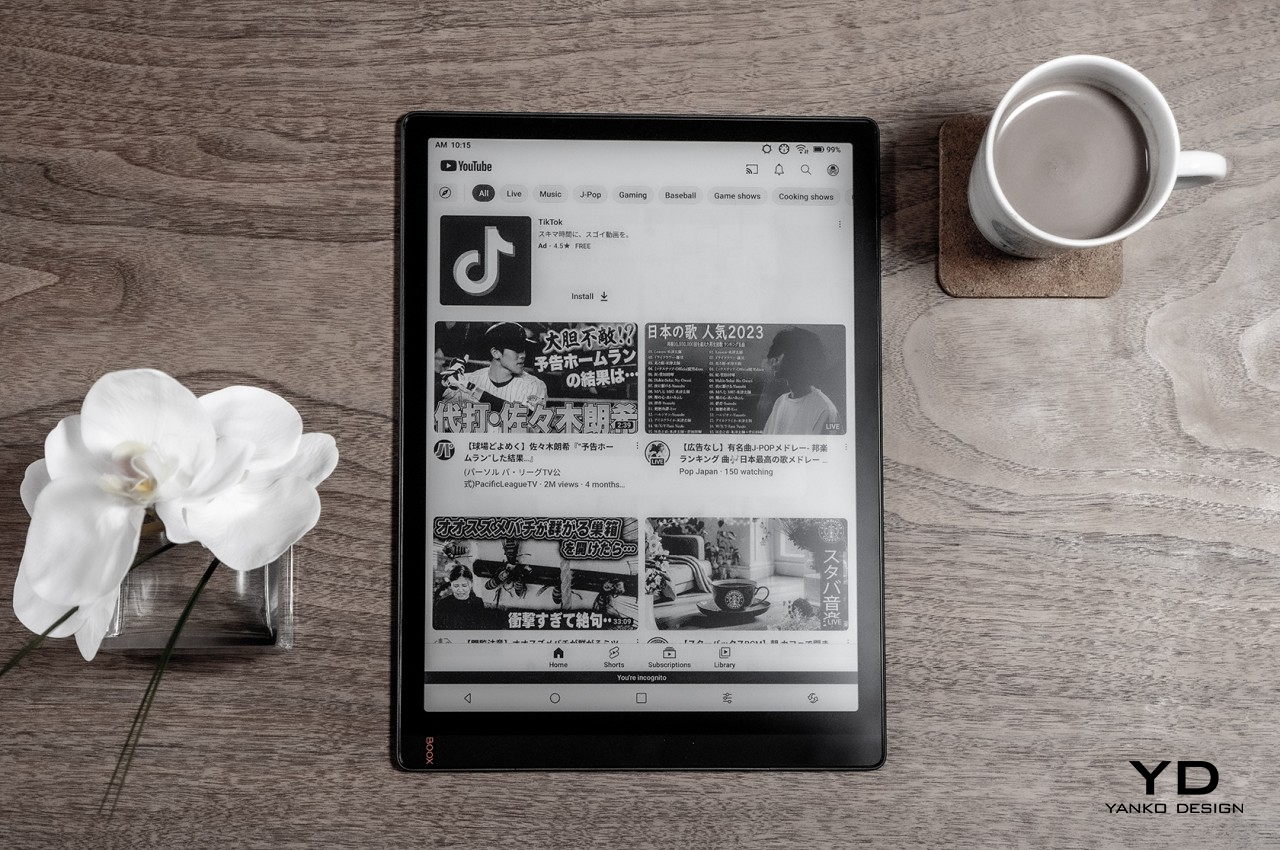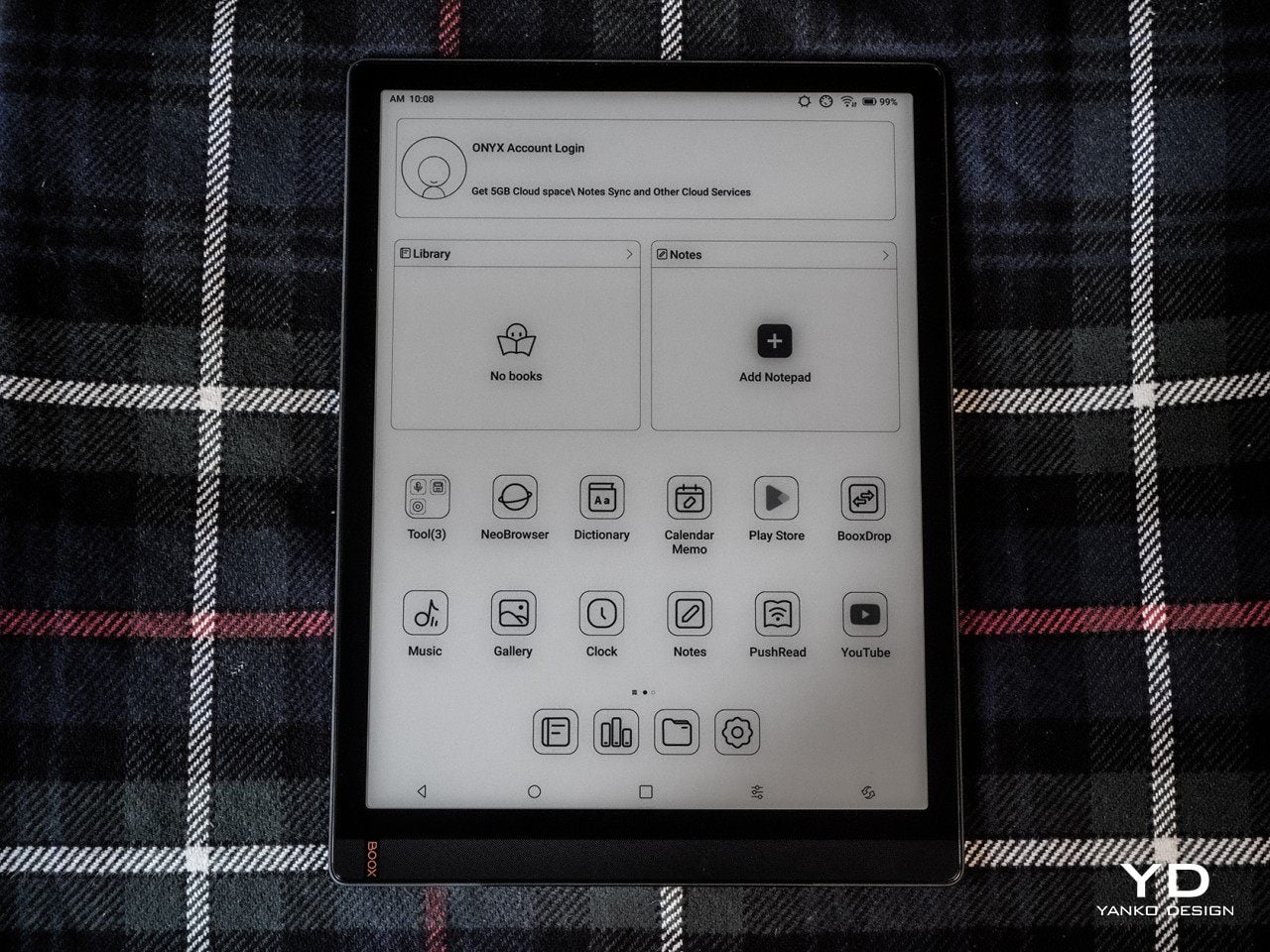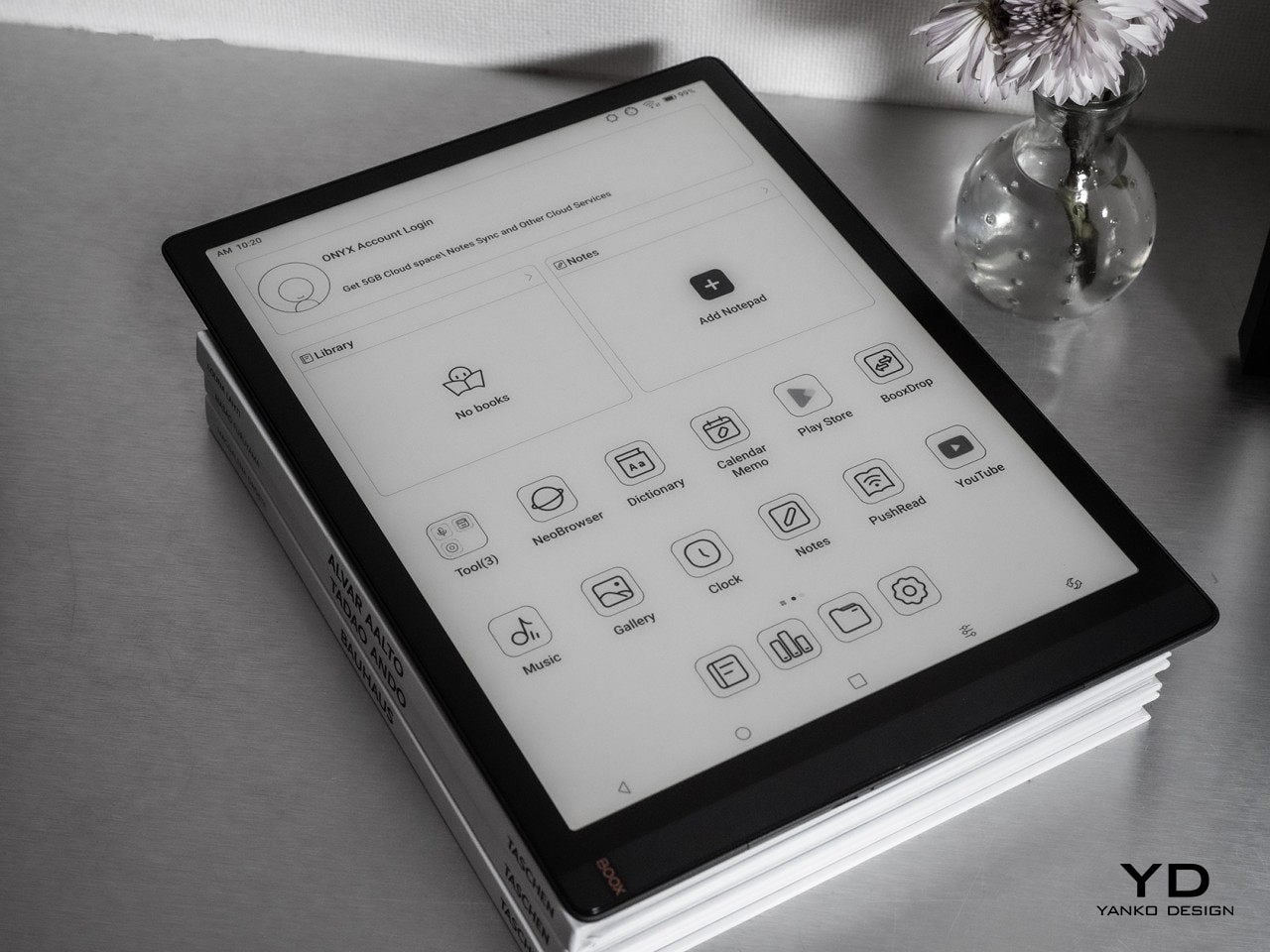
PROS:
- Crisp and large screen is great for A4 and PDF documents
- Impressive note-taking experience with tilt-sensitivity
- Google Play Store comes pre-installed
CONS:
- Large size makes it less portable
- Black and White screen only
- Very expensive
RATINGS:
SUSTAINABILITY / REPAIRABILITY
EDITOR'S QUOTE:
Large and powerful, the Onyx BOOX Tab X shatters the stereotype of what an e-Reader should be but also raises questions of whether its market niche justifies its high price.
E-Ink readers like the Amazon Kindle started out as trivial devices to take the place of hundreds of paper books. There earliest ones didn’t even have great screens because they only needed to display text, thanks to the rarity of images in these documents. The market focused on simplicity, portability, and dirt-cheap prices, almost selling the devices at a loss and focusing on e-book sales or subscriptions instead. That market, however, has changed significantly in the past years, and e-Paper devices have become more diverse and more powerful, giving birth to devices that are less e-Readers and more tablets with E-Ink screens. The new Onyx BOOX Tab X is one of the largest and perhaps most powerful of this new generation, and we take it for a test drive to see if it’s a device that makes sense in the first place.
Designer: Onyx
Aesthetics
The earliest e-Book readers were uninspiring plastic devices that could almost fit inside a handbag, at least for bigger bag sizes. More recent models have stepped up their design game but have still stuck to the very basics. Some have played around with different materials or colors, while others have even dabbled in mixing up some elements a bit. At the end of the day, though, these modern e-Readers and E-Ink tablets still retain their predominantly minimalist look that probably won’t win any design awards yet.
The BOOX Tab X is no different, and it even supersizes all those aesthetic traits. It does use a magnesium alloy chassis that makes it lightweight yet durable while also giving it a more premium feel compared to plastic enclosures. There are barely any markings on the front and back of the device, save for the lone BOOX label on the “chin” of the tablet. The device definitely doesn’t look cheap, but it’s not something visually memorable either. It gets the job done and makes the unnecessary parts disappear into the background.
The device ships with Onyx’s latest stylus, which looks just as minimalist as the tablet. The shaft has a subtle hexagonal shape that prevents it from just rolling off flat surfaces and also provides a more ergonomic grip. The eraser at the top looks like a knob but has no other function than being an eraser. While the pen’s weight feels solid and comfortable, its build doesn’t exactly inspire that much confidence in quality and durability.

Ergonomics
There are e-Readers today that would be considered very large compared to regular Kindles and Nooks, but the Onyx BOOX Tab X definitely takes the cake as one of the extremely few giants standing at 13.3 inches. That immediately translates to a larger screen for reading books or writing notes, of course, but that doesn’t come without a price. That price comes not just in terms of financial cost but also in user comfort.
Although definitely lighter than an equivalent 13.3-inch Android tablet or iPad Pro, the BOOX Tab X is still a heavyweight compared to regular e-Book readers. It isn’t something that you’ll be holding up a lot to read documents, whether for work or for leisure, without supporting it with something like a stand or even your legs. It’s definitely doable for short periods of time, but any prolonged use could lead to strain or even injury. Of course, as a tablet, the BOOX Tab X is designed for a rather narrow range of use cases, most of which involve using it on a desk or table.
E-Ink panels have been the screens of choice for e-Book readers because they put less strain on the eyes compared to typical LCD and OLED displays. That remains true for the BOOX Tab X, which even increases the comfort level by letting the user choose how bright, warm, or cold they want the screen to be. LED lighting embedded in a gel layer that’s actually part of the display assembly makes sure that the lighting is diffused evenly across the screen, giving it a more comfortable glow. Your hands might get tired easily from holding up this large tablet, but your eyes will definitely continue enjoying the content on its screen.
Performance
The Onyx BOOX Tab X is really a large tablet first and an e-Reader second, and its specs make that fact clear. The device is powered by a 2GHz octa-core Qualcomm processor, similar to what you’d find in Android tablets, and has 6GB of RAM with 128GB of internal storage. That’s definitely more than your average Kindle, but all of that power is actually just sufficient for all the apps that it can run.
Like many of Onyx’s devices these days, this tablet runs on Android, specifically an older Android 11 version. It does come, however, with Google Play Store already ready for use rather than bending over backward to install Google apps. This means that you’ll have access to almost all the Android apps you’re familiar with, including some games, and you’re limit is really just the screen at this point.

Of course, that screen is a gem among E-Ink’s panels, with a large 13.3-inch size and a high resolution of 2200×1650 for a sharp 207dpi pixel density. That means that not only text but also images come out crisp and clear, making it a joy to use regardless of the content on-screen. Although there are color E-Ink panels already available, the BOOX Tab X is more traditional in using a black-and-white screen only. There are four different refresh speeds for the screen, from the slowest one with the best quality to an ultra-fast mode with the poorest quality. The latter makes watching videos and playing games possible on the device, though it won’t exactly be an enjoyable activity.
The BOOX Tab X is more than just an e-Reader, though. With the included Pen 2 Pro stylus and the built-in note-taking app, you can easily jot down notes or even draw a few sketches or diagrams with ease. With a nearly limitless pool of Android apps, you can also browse the Web, tap out emails, or type documents using a Bluetooth keyboard, turning the device into a more general-purpose productivity tablet than just a giant e-Reader.
Sustainability
This large Onyx tablet makes use of a metal chassis, which is a marked improvement in both quality and sustainability compared to plastic devices. Other than that, however, there isn’t much going for the BOOX Tab X in terms of sustainability or even repairability. Packaging is still on the more traditional combination of cardboard and plastic, though Onyx definitely deserves kudos for an aesthetic design in that aspect.
Onyx is no longer a fledgling company, and it puts out new devices almost every quarter. This means that their overall carbon footprint is also rising every year, and sustainability can no longer be something it can put off for much longer. Hopefully, the company has become more aware of this growing trend in the industry and will have a clearer program for reducing its carbon emissions in the very near future.

Value
There is no denying that the Onyx BOOX Tab X is a powerful device that takes e-Readers and tablets to a whole new ballpark. The large screen makes reading all kinds of documents more comfortable, while the powerful specs and access to Google Play Store transform it into a multi-purpose portable computer. Whether it is going over work reports, reading magazines, taking lecture notes, or even playing games, the device is more than capable of handling whatever you throw at it that doesn’t require more than a few shades of gray.
The question, however, is whether there’s a place for such a device in the market. While everyone will probably appreciate a larger screen, that size also makes it a bit more tedious and inconvenient to carry around. Then there’s the steep $880 price tag attached to it that will most likely make anyone do a double-take. There might be a very niche use case for such a large e-Reader, but it’s still hard to justify the expense when the $600 BOOX Tab Ultra is almost just as powerful, comes with a more manageable 10.3-inch screen, and even has a camera on its back.
Verdict
There is really no turning back to the e-Readers of old. Even Amazon has started adopting more modern technologies, such as a stylus on the Kindle Scribe. While there will always be a market for smaller, simpler, and cheaper e-Book readers, the growing trend points to devices that are growing not only in power but also in size.
The Onyx BOOX Tab X perhaps represents the extreme of that trend, with a spacious 13.3-inch E-Ink Mobius Carta screen, powerful hardware, and Google Play compatibility right out of the box. To say that it’s a large Android tablet with an E-Ink screen wouldn’t be far off the mark, which, unfortunately, also makes the device a bit less appealing. There will probably be very few people who would absolutely need an E-Ink screen as large as these, and even fewer that could afford its cost. For those that do have a use for it and can afford it, the BOOX Tab X is definitely at the top of its class, but most people might find themselves gravitating toward smaller and more accessible models instead.

The post Onyx BOOX Tab X E-Ink Tablet Review: Bigger isn’t Always Better first appeared on Yanko Design.




